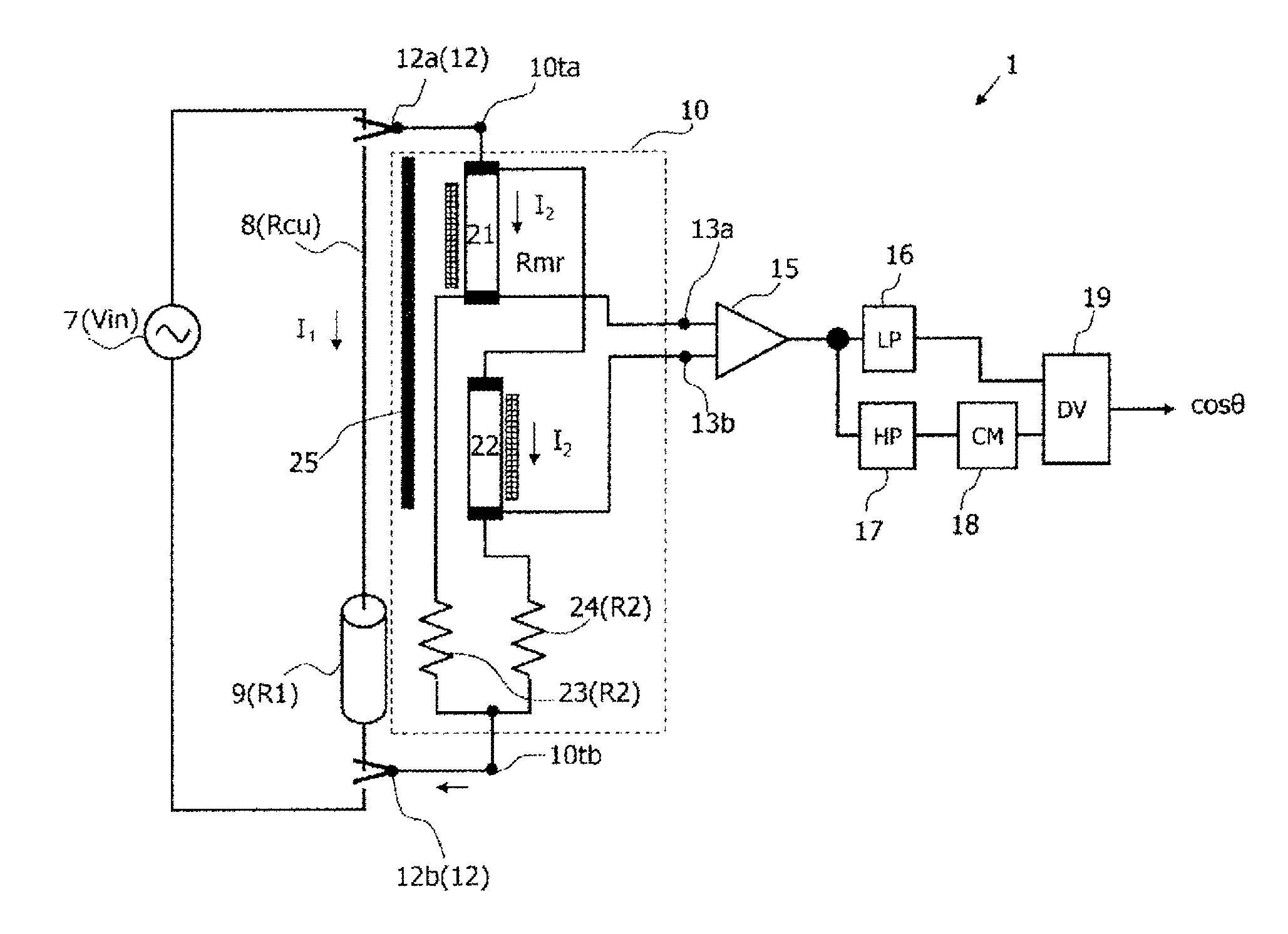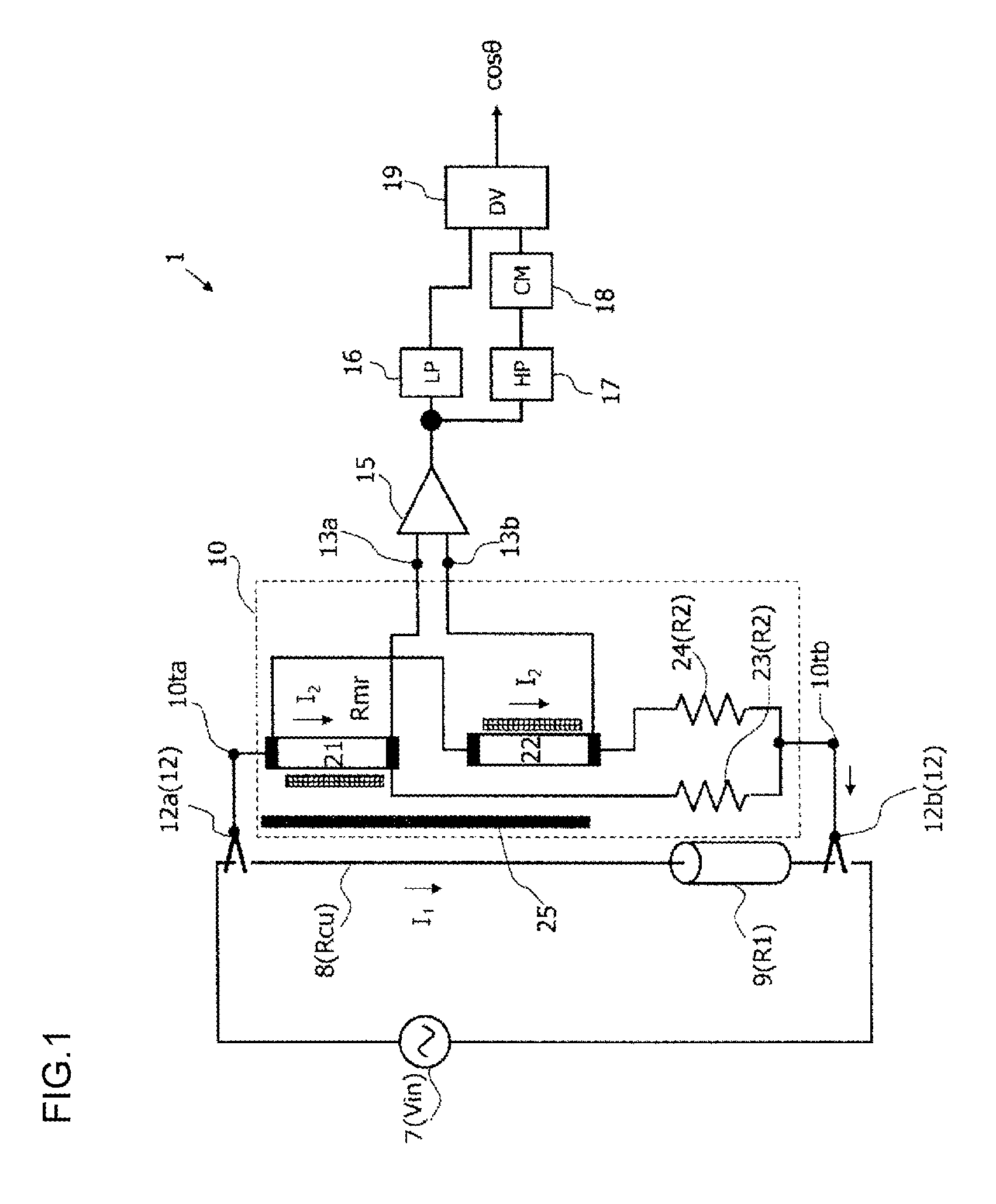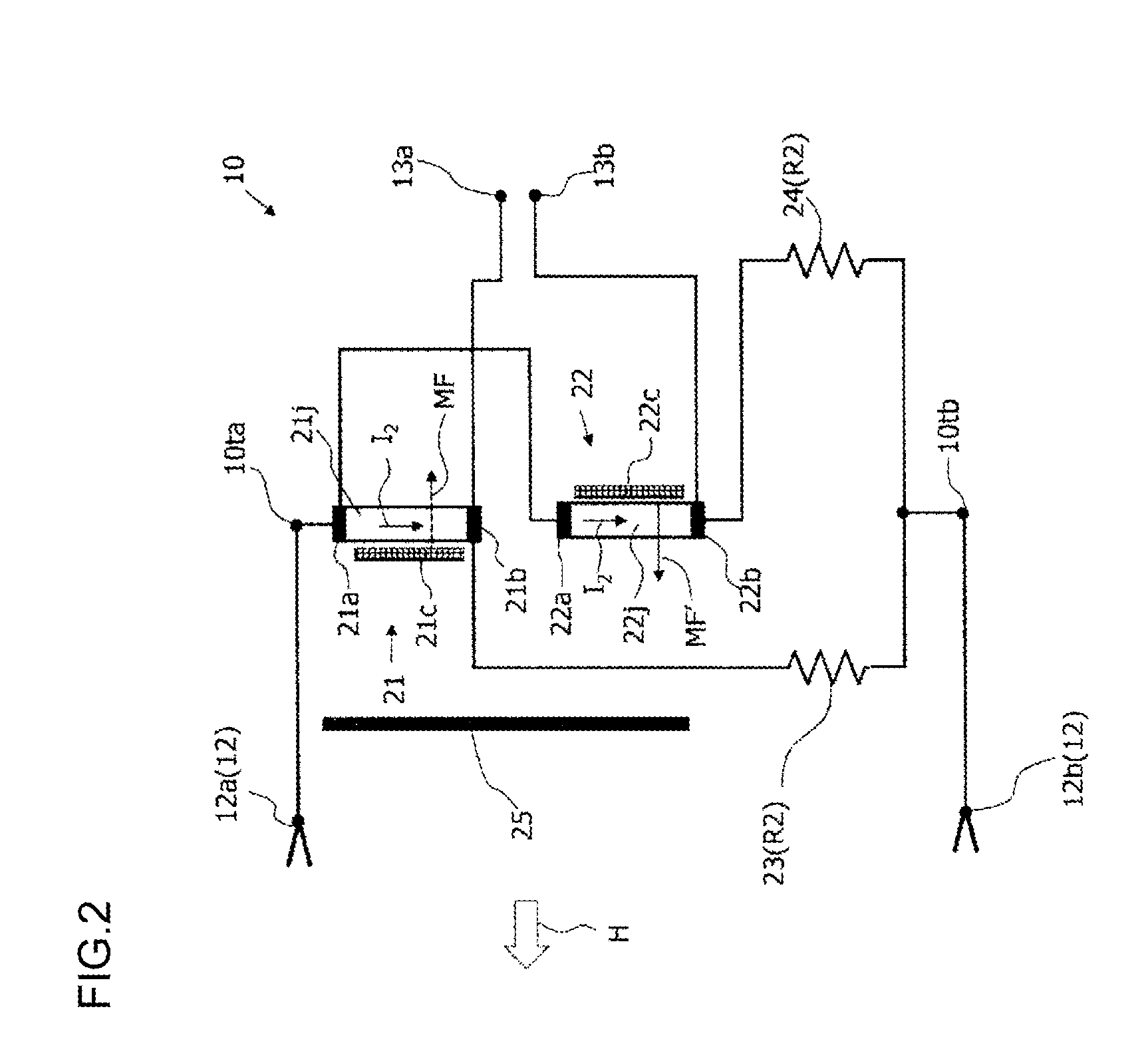Power factor measurement device
a technology of power factor and measurement device, which is applied in the direction of electric devices, instruments, transportation and packaging, etc., can solve the problems of complicated calculations of reactive power, and achieve the effects of less measurement energy consumption, easy installation, and saving power
- Summary
- Abstract
- Description
- Claims
- Application Information
AI Technical Summary
Benefits of technology
Problems solved by technology
Method used
Image
Examples
first embodiment
[0031]FIG. 1 illustrates a structure of a power factor measurement apparatus according to the present invention. The power factor measurement apparatus 1 according to the present invention includes coupling ends 12, a power factor sensor 10, a voltage detector 15, a low-pass filter 16, a high-pass filter 17, a rectifier 18, and a divider 19. The power factor measurement apparatus 1 according to the present invention measures a power factor of power consumed at a load 9 (its resistance value is R1) connected to a power supply 7. Herein, the power supply 7 is AC-powered. The power supply 7 is connected with the load 9 via a connection line 8 (its resistance value is Rcu).
[0032]The coupling ends 12 are terminals for connecting the power factor sensor 10 in the power factor measurement apparatus 1 to the power supply 7 in the circuit to be measured in parallel with the load 9. Therefore, the coupling ends 12 are paired, and are discriminated as the coupling ends 12a and 12b.
[0033]FIG. ...
second embodiment
[0066]FIG. 5 illustrates a variation of the magnetic element. As described above, the power factor measurement apparatus 1 according to the present invention can obtain a voltage proportional to a power factor by finding and dividing a DC voltage (proportional to active power) and an AC voltage (proportional to apparent power) based on a differential output in a pair of magnetic elements having the different change rates of electric resistances relative to the same external magnetic field H.
[0067]The magnetic film of the magnetic element has an even function relative to a magnetic field applied from the outside as illustrated in FIG. 3(b) and FIG. 4(b), and a resistance value thereof proportional to the applied magnetic field cannot be obtained by itself. Thus, in the magnetic elements 21 and 22, the magnetic field generating sources such as permanent magnet are arranged as the bias means 21c and 22c near the magnetic films 21j and 22j, respectively, thereby generating a biased magn...
third embodiment
[0080]FIG. 9 illustrates a structure of a power factor measurement apparatus 3 according to the present embodiment. The same parts as the first and second embodiments are denoted as the same reference numerals, and the description thereof will be omitted. The power factor measurement apparatus 3 according to the present embodiment is characterized by magnetic elements 41 and 42. In the magnetic elements 41 and 42, magnetization facilitating axes 41EA and 42EA are tilted and induced toward the longitudinal directions, respectively. Further, the magnetization facilitating axes of the magnetic elements 41 and 42 are induced in the different directions relative to the current I2 flowing on the magnetic films, respectively.
[0081]With such structure, the magnetizations M of the magnetic elements 41 and 42 rotate as M1 and M2 due to the magnetic field H generated by the current I1 flowing in the circuit to be measured, respectively. The orientations of the current I2 flowing in the magneti...
PUM
 Login to View More
Login to View More Abstract
Description
Claims
Application Information
 Login to View More
Login to View More - R&D
- Intellectual Property
- Life Sciences
- Materials
- Tech Scout
- Unparalleled Data Quality
- Higher Quality Content
- 60% Fewer Hallucinations
Browse by: Latest US Patents, China's latest patents, Technical Efficacy Thesaurus, Application Domain, Technology Topic, Popular Technical Reports.
© 2025 PatSnap. All rights reserved.Legal|Privacy policy|Modern Slavery Act Transparency Statement|Sitemap|About US| Contact US: help@patsnap.com



